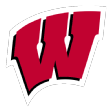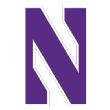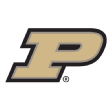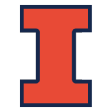Nebraska vs Michigan in the B1G Title game?
Michigan & Nebraska named Big Ten football favorites in cleveland.com 2019 preseason poll
July 17, 2019 7:50 AM
Updated 11:16 AM;
By
Doug Lesmerises, cleveland.com
COLUMBUS, Ohio -- This is Jim Harbaugh’s year. At least, that’s what 34 writers from around the Big Ten predicted in voting conducted by cleveland.com.
Michigan was selected as the preseason Big Ten football favorite in a tight race with Ohio State, as 17 writers predicted the Wolverines as the 2019 conference champions, 14 chose the Buckeyes, two picked Nebraska and one picked Northwestern.
This is the ninth year that cleveland.com has organized voting from league writers, ever since the Big Ten did away with the official preseason predictions that nearly every other conference handles. Into the breech stepped our poll, which has been predicting Big Ten champs, mostly unsuccessfully, since 2011. Big Ten media days will take place Thursday and Friday in Chicago, where the league will unveil a watch list of players, but no actual predictions.
Ohio State had been picked as the preseason favorite the last four years and in five of the six previous seasons. The Buckeyes are two-time defending conference champs.
Our voters, which included at least one beat writer from all 14 conference teams, as well as several writers that cover the league as a whole, saw the two divisions in very different ways. The East is a clear two-team race, while the West is wide open, with five of the seven teams receiving at least one first-place vote. Nebraska and Iowa were ahead of the pack, however.
Each writer was asked to rank each division from top to bottom, with seven points awarded for a first-place vote, down to one point for a seventh-place vote. Here’s how the full divisions shook out.
BIG TEN EAST
1. Michigan, 222 points (20 first-place votes)
2. Ohio State, 214 points (14)
3. Michigan State, 156 points
4. Penn State, 154 points
5. Indiana, 86.5 points
6. Maryland, 82.5 points
7. Rutgers, 37 points
BIG TEN WEST
1. Nebraska, 198 points (14 first-place votes)
2. Iowa, 194.5 points (14)
3. Wisconsin, 172.5 points (4)
4. Northwestern, 142.5 points (1)
5. Purdue, 110.5 points
6. Minnesota, 100 points (1)
7. Illinois, 34 points
Here were the most popular Big Ten Championship Game predictions for our voters.
Michigan over Nebraska (8)
Michigan over Iowa (8)
Ohio State over Iowa (6)
Ohio State over Nebraska (4)
Ohio State over Wisconsin (3)
Nebraska over Michigan (2)
Michigan over Wisconsin (1)
Ohio State over Minnesota (1)
Northwestern over Michigan (1)
It’s at this point where the uneven track record of the first eight years of this poll must be noted. Look at last year. Wisconsin was the unanimous favorite in the West, although many around the nation whiffed on the Badgers, who finished 5-4 in the conference and in a three-way tie for second. Northwestern, the clear West winner at 8-1 last season, was predicted to finish third.
The voters did get Ohio State right in the East last year, but Michigan, which tied the Buckeyes for the best East record at 8-1, was picked fourth in the East. After underestimating the Wolverines, voters have come around, predicting Michigan’s first conference title since 2004.
Other voting notes:
• Nebraska and Iowa tied for the most first-place votes in the West, but the Cornhuskers prevailed with better down ballot support. Eleven voters picked Nebraska second, while only six picked Iowa second.
• How varied was the West? Nebraska received votes for everything from first to fifth. Iowa, Wisconsin, Northwestern and Minnesota received votes for everything from first to sixth.
• The exception? Illinois was a unanimous choice for last. Illinois also received every last-place vote a year ago -- and then finished last at 2-7 in conference place.
• In the East, 33 of 34 voters ranked Michigan first or second, while 32 of 34 had Ohio State first or second.
• Michigan State edged Penn State for third place, as the East had a clear top-two, a clear middle-two, a clear bottom-two, and then Rutgers. This is how the East has been viewed in many years in this poll.
• Rutgers, which was 0-9 in conference play last year, was almost a unanimous pick for last. One voter picked Rutgers sixth, and one picked Rutgers fifth. (This voting is confidential, but I’ll admit to that. Yes, I picked Rutgers to go 3-6 in conference play and finish fifth. I often tease the Scarlet Knights, but this season I believe in near-mediocrity in New Jersey.)
As for our voting history, here are the favorites and the actual league champions since the split into divisions, the advent of the title game and the abdication of preseason responsibilities by the league.
2018:
Pick, Ohio State. Actual, Ohio State.
2017:
Pick, Ohio State. Actual, Ohio State.
2016:
Pick, Ohio State. Actual, Penn State.
2015:
Pick, Ohio State. Actual, Michigan State.
2014:
Pick, Michigan State. Actual, Ohio State.
2013:
Pick, Ohio State. Actual, Michigan State.
2012:
Pick, Michigan. Actual, Wisconsin.
2011:
Pick, Nebraska. Actual, Wisconsin.
LINK:
https://www.cleveland.com/osu/2019/...rite-in-clevelandcom-2019-preseason-poll.html









